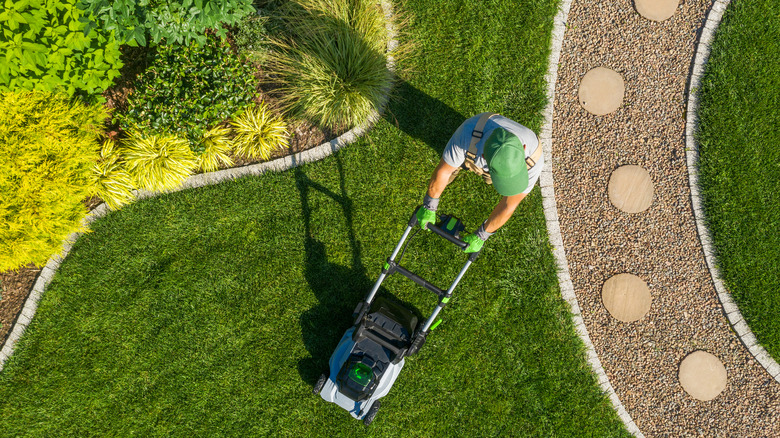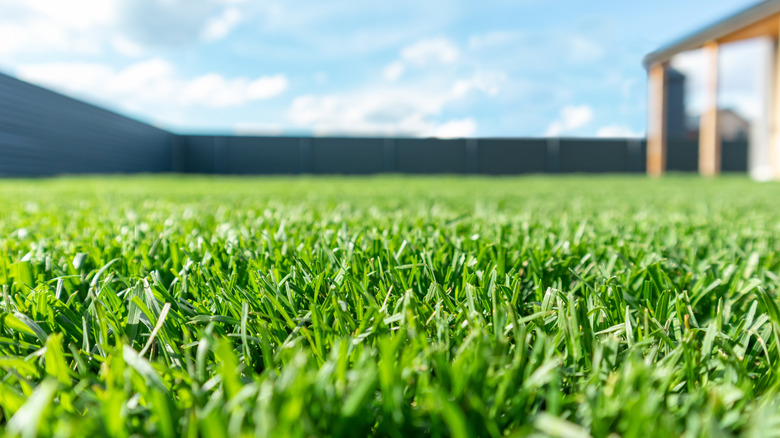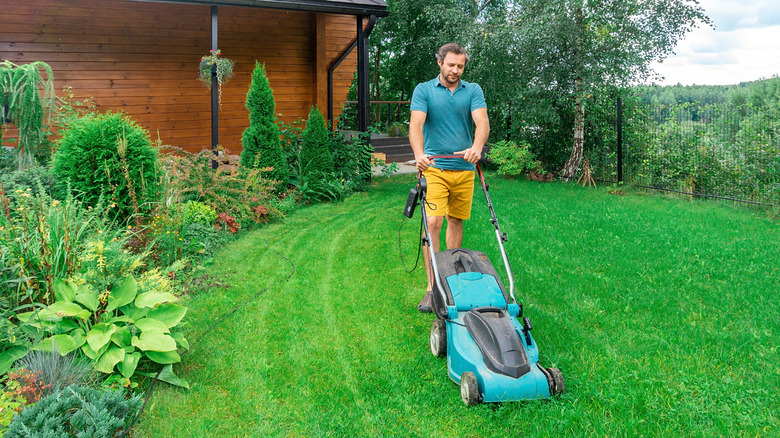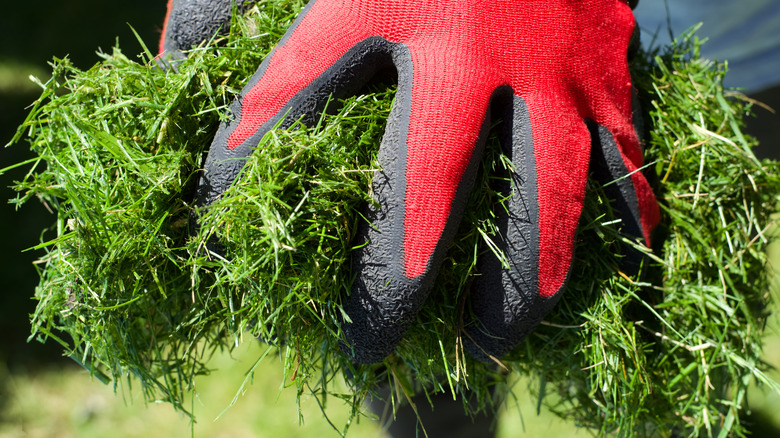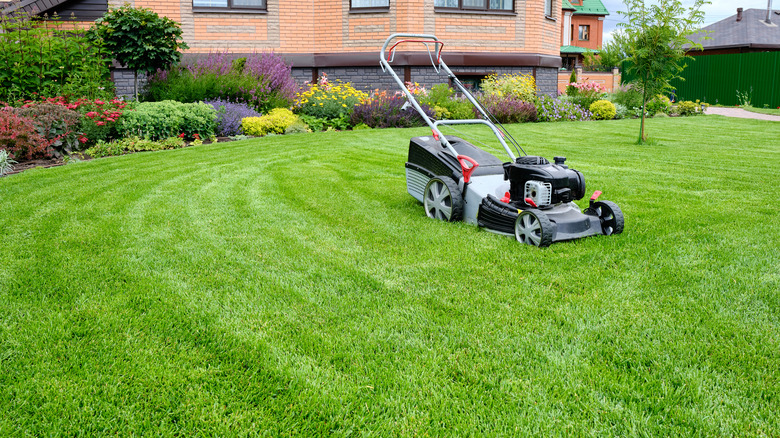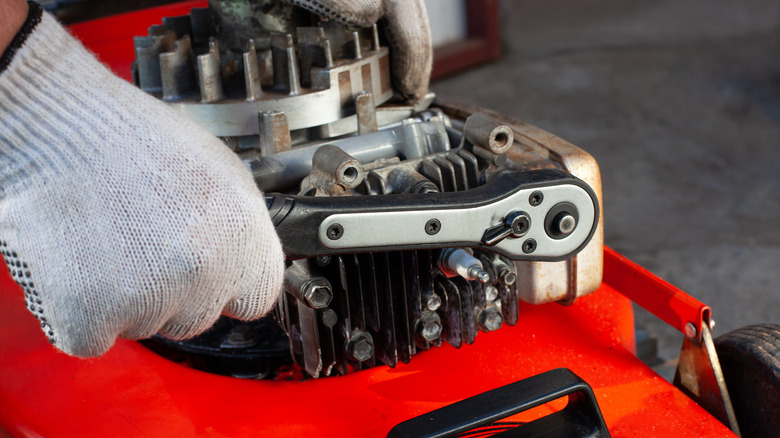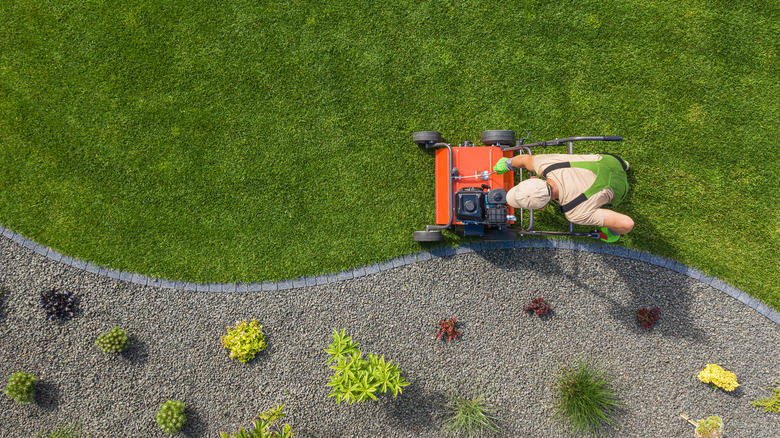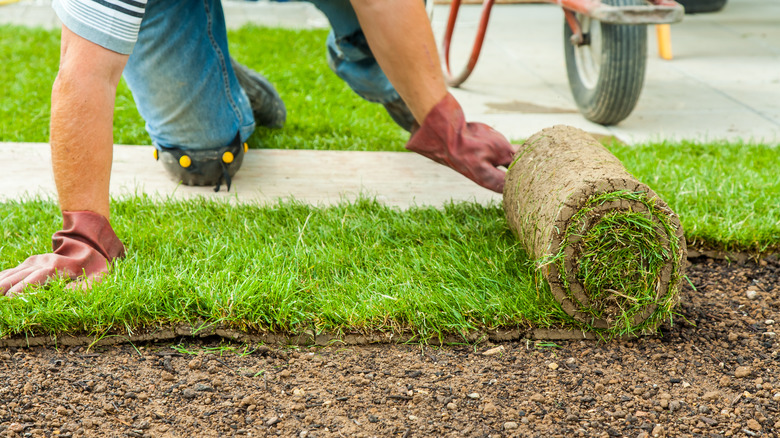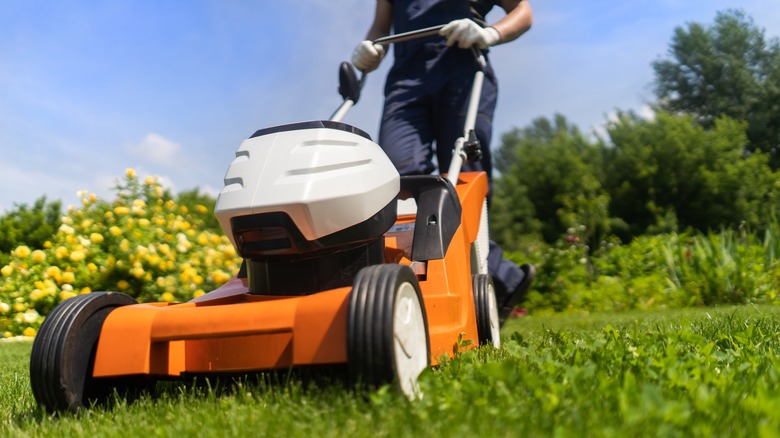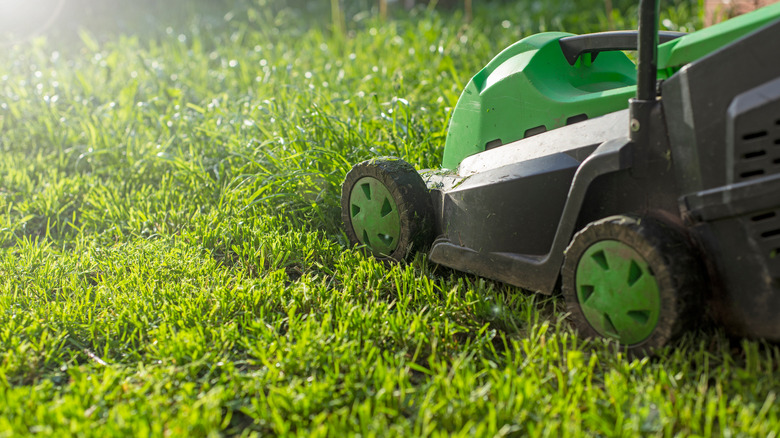Tips On Getting The Most Out Of Each Mow
Mowing the lawn is a routine task that homeowners participate in on a regular basis. Across the United States, lawns are manicured by homeowners and professional landscaping teams, often in force on a Saturday or Sunday morning. There's something that feels almost classic about the task of mowing the lawn, but it can be easy to make mistakes when caring for this exterior component of your property.
LawnStarter recommends a few key practices that will help make the mowing process easier and more effective, starting with courtesy for your neighbors. These tips tend not to require too much thinking since many neighbors are friendly and considerate as a rule rather than an exception. However, thinking of the peace and comfort that your neighbors are looking for in their own homes is a great place to begin when approaching lawn care since it's all too often overlooked entirely.
The lawn, when well cared for, offers an extension of your home's comforting space, and these tips will help you make the most of your mowing routine and the calm and comfort that come from it.
1. Mow the lawn only when it's dry
It's important to only mow your lawn when the grass is dry. A wet lawn will not produce the kind of pristine cut that you're looking for when mowing. Instead, if you mow the lawn when it's wet, you'll fray the grass blades and may even dig deep ruts into the soil, further damaging the lawn (via Gardener's World).
Letting your lawn dry out before mowing is the best way to ensure that you create a clean, natural, and uniform cut across your home's landscape. As well, while many homeowners seek to mow on a routine schedule, pushing your mowing back by a few days or even by a full week won't be the end of the world as long as you continue to maintain the lawn responsibly. This also means timing your sprinkler system to remain inactive for the hours leading up to your intended mowing time.
2. Mow in revolving patterns
While your home lawn won't require an in-depth pattern creation like those seen on professional sports fields, it is important to mow in a varying pattern that changes the direction of the cut every once in a while. Lawntech reports that grass can end up lying flat if it's cut in the same direction each time you mow. This can wear out the structure of the plant and lead to increased weed presence, patchy lawn segments, or even a need to resod the property earlier than you anticipated.
It's easy to change the direction of your mowing once you've taken this tip on board, and a revolving cut pattern can even make the yard look more vibrant and beautiful as the blades of grass stand up at different angles than you may be used to seeing them. This practice makes for a healthy lawn and can even be a conversation starter when hosting guests if you choose to become extra creative about the mowing pattern you've adopted for special occasions or even routine cutting.
3. Leave grass clippings in place
Gardner's World reports that grass clippings can be used for a variety of outdoor needs, so sweeping them up and throwing them away (or blowing them down into the street with a powered blower) is actually quite wasteful when it comes to this valuable resource.
During the summer months, many homeowners across the country will often need to mow every week. This is also the time when temperatures and sunlight hours are at their maximum. Grass clippings offer a key element of protection against the summer sun. By leaving them in place on the yard itself, you add a barrier between the remaining grass and hot air that can help retain moisture in the soil and blades of grass. However, if you find yourself with more grass clippings than you need, this organic material also makes for a great compost addition. The rules of composting tend to remain fast and loose, but a healthy mixture of green and brown material is always a must. Grass clippings make for a valuable green addition rich in minerals and will break down rapidly.
4. Sharpen the blades on your lawn mower
Just like mowing when the lawn is wet, a dull mower blade will fray and damage the blades of grass rather than shearing them cleanly and allowing for healthy, natural growth to continue. Lawntech suggests keeping a spare blade at home so that you can quickly swap out the cutting tool if you notice that your mower is blunting the grass beneath it rather than cutting it down. Keeping the blades on cutting tools sharp is a crucial part of maintenance across your toolbox, and the mowing equipment that you use on a regular basis is no different from any other blade that you maintain.
A blunt lawnmower blade can be dangerous in the event of debris on the lawn as well. Certainly, no homeowner wants to shred a piece of garbage or recycling that's been blown into the grass, but accidents can happen. A sharp blade will pass through most foreign objects that might make their way onto the lawn, whereas a dull one may end up launching the junk at a high speed.
5. Set your mower height to take off about one-third of the length with each mow
A good rule of thumb when mowing the lawn is to set your mower at a height that will reduce the lawn by about a third of its length, explains LawnStarter. Always taking off less than (or up to) one-third of the height is a great way to ensure that your grass is never placed under increased stress. LawnStarter recommends adhering to this advice, even if you've been away from home for a while and the grass is extremely tall compared to its typical length. Removing only one-third of the height during any mow will give your lawn the time it needs to acclimate to the excision of added plant material.
Lawns do not grow like hair. The root systems are placed under immense pressure if the carpet-like plant is suddenly sheared of a significant portion of the photosynthesis-participating chlorophyll that lives within the green, grassy section of the plant (via National Geographic).
6. Don't forget to edge
It's also important to clip the edges of your lawn for a pristine look. Edging is necessary because it helps elevate the visual aspects of your lawn while also keeping the grass healthy and in good condition. Edging regularly will help keep the grass from fraying on the ends of your yard. The lawn is a living and constantly adapting thing that can provide your home with many benefits, but you have to take care of the grass in order to enjoy all that it has to offer.
Gardener's World recommends edging after every mow to make the most of the clean corners and lines that separate the grass from surrounding concrete spaces and other elements that run right up to your grass. Like edging, it's a good idea to use a weed whacker or another similar tool to cut around sprinkler heads and other fragile parts of the yard. This helps you keep them safe from the powerful and broad-spinning blade of the lawnmower.
7. Wait to mow newly placed sod
Newly laid sod requires some additional time to acclimate to its new spot before it can be mowed. Sod is laid in strips that resemble slices of carpeting. The grass pokes through the top of the layer while the roots below are positioned perfectly to take hold in the soil beneath. Yet, it will take around two weeks for the grass to bond with the landscape, meaning you should wait at least this long before mowing the newly placed sod (via The Green Pinky).
New sod is fragile and requires extreme caution and added care. This means watering the sod twice per day during the two-week period that follows the initial installation. Just like established grass, watering in the morning and late afternoon provides the greatest benefit to your sod layer because it won't have to contend with the higher than average evaporation rates that take hold during the middle of the day (when the sun is at its highest point).
8. Change your mowing frequency to match with the season's needs
Mowing frequency changes throughout the year. For homeowners with warm-season grass, November to February may require zero mows while in June and July you might be out once a week to trim down the lawn. A virtual opposite effect takes place among homeowners with cool-season grasses. These lawns see an explosion of growth in April and October with little activity in June through August (via LawnStarter).
Your local conditions will play a major role in the frequency that your lawn needs to be cut down. However, Gardner's World recommends using the one-third rule to judge how often you should be trimming the lawn. If you'd have to remove more than one-third of the height to keep the lawn looking clean at your current mowing schedule, then you should incorporate more frequent mowing—perhaps even rolling out the lawnmower twice per week during the peak growing periods.
9. Get the job done around mid-morning for the best results
LawnStarter recommends working on the lawn around mid-morning. This gives the grass enough time to shake off the morning dew as the sun rises and starts to warm the ground. Mowing in the morning is often preferable because it gives your grass the time it needs to soak up the sunshine throughout the day while also avoiding the hottest part of the afternoon (for your sake, as well).
While the midday heat is typically a poor time to get the lawnmower out, evening mowing is also frowned upon because it doesn't allow your lawn the time it needs to soak up sunlight after the trim has been completed. When getting out to mow, one thing to remember is that an automated sprinkler timer may need to be adjusted to account for the dryness requirement. Watering as the sun begins to come up is a common practice and is highly recommended by Scotts. But you'll need to delay the soaking until after your mowing has concluded to provide your lawn with the best aspects of both tasks.
